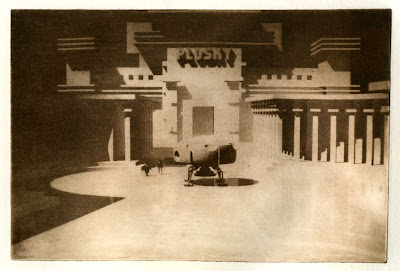120 Years of Electronic Music2

The Roland Corporation...
The Roland Corporation was established in Japan in 1972 and released its first musical instrument, 'Japans first synthesiser', the SH1000 in 1973. The SH1000 was a portable and affordable analogue synthesiser.In the same year Roland released a domestic electronic combo-piano.
In 1976 Roland released their System 700 modular studio system synthesiser. Aimed at the broadcast market this synthesiser was used by NHK in Japan and BBC in England.
Roland continued to produce innovative instruments, in 1977 with their GR500 series analogue guitar synthesisers and the first commercial rhythm machine, the "Compurhythm" CR78. In the early eighties Roland released a range of inexpensive synthesisers, sequencers and drum machines, the MC202 sequncer, TB303 synth/sequencer, the SH101 monsynthe and the TR-808 drum machine which were compact and affordable yet had some versatile features that has ensured their popularity into the 1990's.
Early Roland Synthesisers
In 1976 Roland released their System 700 modular studio system synthesiser. Aimed at the broadcast market this synthesiser was used by NHK in Japan and BBC in England.
Roland continued to produce innovative instruments, in 1977 with their GR500 series analogue guitar synthesisers and the first commercial rhythm machine, the "Compurhythm" CR78. In the early eighties Roland released a range of inexpensive synthesisers, sequencers and drum machines, the MC202 sequncer, TB303 synth/sequencer, the SH101 monsynthe and the TR-808 drum machine which were compact and affordable yet had some versatile features that has ensured their popularity into the 1990's.
Early Roland Synthesisers
The Roland System 700 modular synthesiser (1976)
Roland System 700 modular synthesiserThe Roland System 700 synthesiser was Rolands first modular synthesiser released in 1976 and aimed at the corporate broacasting studio market.
The Roland System 100 modular synthesiser (1976)
The Roland System 100 modular synthesiser (1976)

Roland System 100 modular synthesiserThe System 100 was a modular analogue monophonic synthesiser, a more affordable version of the System 700. The System 100 with one VCO per voice (or 2 with an expander), the machine was controlled by a 37 note keyboard. The 1976 models modular units comprised of : 101, the synthesiser, 102 expander, 103 mixer, 104 sequencer, 109 monitors, RV800 stereo reverb, GE810 graphic eq and PH830 stereo phaser.
The Roland SH101 synthesiser (1980)

Roland SH101 synthesiserRoland's popular SH101 was a monophonic analogue synthesiser with one VCO (with a sub oscillator for modulation) controlled by a 32 note keyboard housed in a light plastic casing with an optional 'guitar style' handle controller.
The Roland SH2 synthesiser (1976)

Roland SH2 synthesiserThe Roland SH2 was a dual oscillator analogue synthesiser controlled by a 37 note keyboard.
The Roland CR 78 "Compurhythm" drum machine

Roland CR 78 "Compurhythm" drum machineOne of the first commercial drum machines. The CR78 had a number of preset rythms with switchable voices.
The Roland Jupiter 4 synthesiser

The Roland Jupiter 8 Polyphonic synthesiser

Roland Jupiter 8 Polyphonic synthesiserThe Jupiter 8 is an 8-voice polyphonic synthesizer with a 61-note keyboard with 2 VCOs per voice. VCO1 is switchable between triangle, sawtooth, pulse, and square waves and can be switched between 4 octaves. VCO2 has the same options with the addition of a noise generator switch. The Jupiter 8 allowed the VCO's to be synced.
The Jupiter 8 voice has two filters. In addition to its lowpass, resonant VCF it has an adjustable, non-resonant, and non-modulatable highpass filter. The VCF can be modulated by one of the envelopes, the LFO, and keyboard tracking.
The Jupiter 8 had a 64 patches and 8 "patch presets" memory. Patch presets can store keyboard splits, along with arpeggiator settings , voice assign mode, hold, portamento, as well as modulation settings. The Jupiter 8 features keyboard split or layer. Split allows you to assign a patch to 4 voices above the split key and a patch to the 4 voices below it.
The Roland Juno 6 Polyphonic synthesiser

The Juno-6 is a 6-voice polyphonic, digital oscillator, analog keyboard with a 5-octave, 61-note (C-C) keyboard. Though it only has one DCO per voice, it is said to have a warm and full sound. The DCO is switchable between any or all of the following waveforms: Pulse (with pulse-width modulation from either the LFO or the ADSR), sawtooth, and a sub-oscillator (square wave). White noise could also be mixed in with the oscillators. Each voice has its own VCF with a continuously variable control for keyboard follow, and an input on the back panel for voltage control. There is also a separate high-pass filter. The LFO features controls for rate and delay, as well as a switch that toggles between two modes, auto (modulation starts when set delay time has passed) and manual (modulation starts when the LFO trigger button, next to the mod wheels on the performance panel, is pressed). Only one envelope generator (ADSR) is available for both the DCOs and the VCOs. The Juno-6 featured an arpeggiator with controls for mode, range, and rate with a clock input on the back panel, and a chorus with two buttons, each button adding more chorus. In addition to arpeggiator and filter control inputs, the back panel also had both mono and stereo outputs, a headphone jack, and a sustain/hold pedal input. About a year later Roland came out with the Juno-60, a programmable Juno-6 with 56 memory locations, their proprietary DCB interface, and a cassette interface.
The Roland TB303 "Bassline" synthesiser/sequencer
The Roland TB303 "Bassline" synthesiser/sequencer

Roland MC202 synthesiser/sequencerThe MC202 was a 2 track sequencer and 1 VCO monophonic synthesiser with a 32 button key 'keyboard'
Further Information:
The Roland Corporation Website
The MC202 Site
"Rebirth" TR808 and 909 emulators




Comments